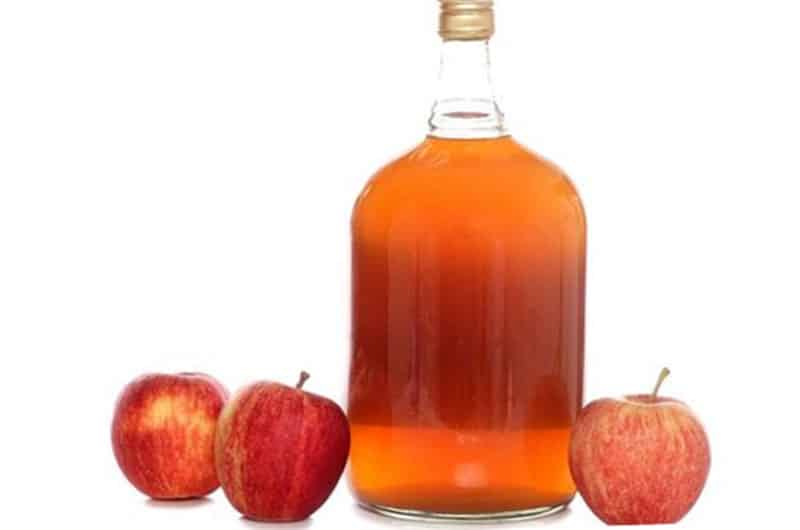~ by Jenny Benzie, Advanced Sommelier + Certified Wine Educator, Proprietress of Epernay Wine & Spirits ~
The leaves are starting to fall, the kids are back in school, and it’s time to enjoy the next couple of weeks on Nantucket that will lead us into an Indian Summer. This is a time for us to reflect on new projects for the fall, reap what we have sown over the summer months, and discover something else to drink besides crisp white wines and dry rosé (at least for the time being). Look no further than a beverage that has quite a bit of New England history.
Cider in its simplest form is an alcoholic beverage made from the fermented juice of apples. It is often referred to as “hard cider,” so as not to be confused with cider from the local farm stand that has not been fermented and does not contain any alcohol. Cider has long been considered a very popular drink worldwide, yet it’s much better known and more often consumed in Europe than in the United States. The British drink a great deal of cider; the UK has the highest per capita consumption than any other country.
History always plays a role in the development of any alcoholic beverage, typically based on necessity, and especially when it concerns politics and wars. When the pilgrims arrived in the New World, cider was their drink of choice. They brought the custom of imbibing it with them coupled with the lack of a sufficient water filtration system on hand. The prolific, hardy apple tree offered a solution to this lack of clean drinking water problem. Apple trees proved to be sustainable and did not need to be replanted, fertilized or watered every year as so other crops.
Cider consumption in the United States began to decline, however, in the early 1900s with the introduction of beer making in New England. It also suffered as one of the side effects of Prohibition; cider production did not rebound after the repeal as well as other alcohol industries. The trends are starting to change here in the New World—hard cider has jumped aboard the craft beverage train. The growth in cider consumption in the United States is largely due to the increase in its domestic production.
While hard cider can be made from any type of apples, those considered cider apples produce a juice when pressed that is tart and dry, yet sweet. This makes them perfect for making cider, but awful for eating as is. The best are naturally fermented using fresh pressed apple juice, not from concentrate. Look for a cider that sources their apples from a local orchard. Many of them also donate their pressed apples to local farmers for animal feed. Think of this concept as “branch-to-bottle,” similar to the farm-to-table concept. Cider making is very similar to the process of making wine. Once the apples are harvested, they are ground to make a pomace. This pulp is then transferred to a press where the juice is extracted. Ale or wine yeast is added to the juice, which then goes through a lengthy fermentation process in which the sugar is converted to alcohol. Because fermentation is done at a lower temperature (40-60 degrees F) in order to maintain the delicate aromas, it can sometimes take up to three months in order for the process to be completed.
Some ciders will be clear after production and not need any filtration. A yeast that would be used for producing Champagne or wine will produce a more clear cider, where using an ale yeast will produce a cider that is typically cloudy. Mass produced ciders are typically filtered and tend to look like crisp, dry sparkling wine, whereas artisanal producers make cider with a stronger flavor and some color or cloudiness.
Before all the sugar is fermented completely dry, the juice is “racked” by separating the juice from the yeast. This stops any further fermentation and allows the finished product to achieve the desired sweetness. The sweeter the cider (some have as much as 23g of sugar), the lower the alcohol. In the opposite direction, the less sugar you find in your cider translates into a finished product with a higher alcohol content. All that being said, it is very rare to find a lite or low-calorie version.
If you are gluten-free, cider is probably the best alcoholic drink out there for you. Plus, it’s all-natural, refreshing, and can be consumed on its own straight from the bottle (or can). Ciders have higher acidity than most hoppy beers that are difficult to pair with food, making cider a great match with several types of cuisine. This acidity also makes it a worthy ingredient in the cocktail culture if you prefer to mix it up a bit as well.
Most commercial ciders only have a shelf life of a year or two, so it is recommended to consume them when they are first released. Hand-crafted ciders are age-worthy for a couple years. Barrel-aged ciders are hard to find, and are being produced more through experimentation at the moment rather than as regular offerings.
The cider production industry in the United States mostly consists of small-sized cider houses that make hard cider on a regional level.
The California Cider Company, which makes Ace Ciders, is located in the Sebastopol area of Sonoma County in California. It was founded in 1994 by Jeffrey House, who located his business in this historic apple growing region because it reminded him of his native England. What makes Ace Ciders unique is that they produce ciders using only the best eating apples for their juice, not the typical cider apples. Sonoma County is a historic apple growing region for Gravenstein apples.
Downeast Cider House is labeled as New England’s Craft Cider. While they make several different cider options, the Original Blend is their signature cider, made where the company began in the basement of a Bates College dormitory in Maine. They eventually grew their way to Boston, where the production now takes place. Even though final production is in the city, it remains a hand-crafted cider, made from hand picked apples (Red Delicious, McIntosh, Cortland, Gala) that are freshly pressed with no artificial flavors or sweeteners.
Owned by Boston Beer, Angry Orchard Hard Cider started making cider in 1995 and has been in commercial production since 2011. They looked to the traditional regions of Europe for inspiration on which varieties of apples to use. Bittersweet French apple varieties, such as Beden, Medaille d’Or, and Michelin, tend to be small and ugly in appearance and bitter on the palate Culinary Italian apples, such as Fuji, Braeburn, Granny Smith, Pink Lady, and Gala, are juicy and lush. They experimented with hard cider for many years in order to perfect their creation. They now have their own orchard in Walden, NY, in the Hudson Valley that will produce its first harvest this fall.
For a local taste of cider, be sure to check out Cisco Brewers Hard Cider. This is produced once a year and is available on tap now at Nantucket Vineyards and available at Proprietors bar & table on India Street. The whole apples from Massachusetts are brought to the island and processed at the Nantucket Vineyard’s facility. This clear, bright, dry cider has a clean finish with a slight bite to provide a slight tannic bite. Mike Harter of Cisco Brewers, Nantucket Vineyards, and Triple Eight Distillery tells us that their dry cider will soon be in 750ml bottles, along with a cranberry cider and a slightly sweet cider.
As American’s taste for local hard cider continues to grow, there are sure to be new trends on the horizon in the hard cider category. Cider has the ability to have the diversification of producing single apple varietal ciders, from single orchard designations, aged in used rum/bourbon/whiskey barrels for an extended period of time, and so forth. It will be of interest to see if the supply of cider apples will be able to keep up with the demand for production. In the meanwhile, enjoy the sweet, yet tart taste of this year’s bounty as soon we make our way to beverages made from the local Nantucket cranberry bogs!



